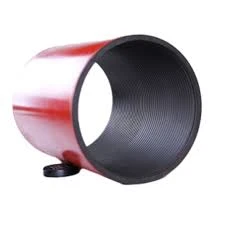- Afrikaans
- Albanian
- Amharic
- Arabic
- Armenian
- Azerbaijani
- Basque
- Belarusian
- Bengali
- Bosnian
- Bulgarian
- Catalan
- Cebuano
- Corsican
- Croatian
- Czech
- Danish
- Dutch
- English
- Esperanto
- Estonian
- Finnish
- French
- Frisian
- Galician
- Georgian
- German
- Greek
- Gujarati
- Haitian Creole
- hausa
- hawaiian
- Hebrew
- Hindi
- Miao
- Hungarian
- Icelandic
- igbo
- Indonesian
- irish
- Italian
- Japanese
- Javanese
- Kannada
- kazakh
- Khmer
- Rwandese
- Korean
- Kurdish
- Kyrgyz
- Lao
- Latin
- Latvian
- Lithuanian
- Luxembourgish
- Macedonian
- Malgashi
- Malay
- Malayalam
- Maltese
- Maori
- Marathi
- Mongolian
- Myanmar
- Nepali
- Norwegian
- Norwegian
- Occitan
- Pashto
- Persian
- Polish
- Portuguese
- Punjabi
- Romanian
- Russian
- Samoan
- Scottish Gaelic
- Serbian
- Sesotho
- Shona
- Sindhi
- Sinhala
- Slovak
- Slovenian
- Somali
- Spanish
- Sundanese
- Swahili
- Swedish
- Tagalog
- Tajik
- Tamil
- Tatar
- Telugu
- Thai
- Turkish
- Turkmen
- Ukrainian
- Urdu
- Uighur
- Uzbek
- Vietnamese
- Welsh
- Bantu
- Yiddish
- Yoruba
- Zulu
aluminum pipe couplings and fittings
Aluminum Pipe Couplings and Fittings
In the realm of construction, plumbing, and various industrial applications, aluminum pipe couplings and fittings play a crucial role in ensuring secure, efficient, and versatile connections. Due to their lightweight nature, corrosion resistance, and strength, aluminum fittings are increasingly becoming the preferred choice over traditional materials like steel or plastic.
Benefits of Using Aluminum Fittings
One of the significant advantages of aluminum pipe couplings and fittings is their resistance to corrosion. Unlike steel, which may rust and deteriorate over time, aluminum naturally forms a protective oxide layer that helps prevent further corrosion. This property is particularly beneficial in applications exposed to harsh environmental conditions, such as coastal areas or industrial settings where moisture and chemicals are prevalent.
Another advantage of aluminum fittings is their lightweight nature. This characteristic not only makes handling and installation easier but also reduces the overall weight of the piping system. This can lead to cost savings in transportation and labor, especially in large-scale projects where numerous fittings are required.
Moreover, aluminum is highly versatile and can be easily machined, allowing for a range of sizes and configurations. From simple couplings to complex fittings, aluminum can accommodate a variety of applications, whether in residential plumbing, HVAC systems, or manufacturing processes.
Types of Aluminum Pipe Fittings
Aluminum pipe couplings and fittings come in various types, each designed to meet specific needs within a piping system
. Some of the commonly used fittings include1. Couplings These fittings are used to connect two sections of pipe, creating a secure joint that facilitates fluid flow. They are available in various sizes and can be threaded or slip-on types.
aluminum pipe couplings and fittings

2. Elbows Used for changing the direction of pipe runs, elbows come in various angles, such as 90 or 45 degrees. This allows for greater flexibility in designing piping layouts.
3. Tees T-fitting or tees are used when a branch line is required from the main pipeline. Their design allows for the creation of multiple outlets from a single inlet, making them essential for more complex piping systems.
4. Adapters and Reducers These fittings allow for the connection of pipes with different diameters, enabling the transition from larger pipes to smaller ones or vice versa. Adapters can also assist in connecting different materials, such as aluminum to PVC.
5. Caps and Plugs To seal the ends of a piping system, caps and plugs are utilized. They can effectively block fluid flow, providing a means for system maintenance or termination.
Applications of Aluminum Pipe Fittings
Due to their properties and versatility, aluminum pipe couplings and fittings are widely used in various industries. In the construction industry, they are essential for HVAC systems, ensuring efficient airflow and temperature control. In plumbing, these fittings provide reliable connections in both residential and commercial applications.
Aluminum fittings are also popular in the automotive and aerospace industries, where weight reduction is critical for performance. Additionally, they are used in chemical processing plants, where resistance to corrosive substances is essential.
Conclusion
In summary, aluminum pipe couplings and fittings offer numerous advantages, making them an indispensable component in many applications. Their corrosion resistance, lightweight nature, and versatility improve the efficiency and longevity of piping systems. Whether in construction, plumbing, or industrial processes, the use of quality aluminum fittings can lead to enhanced performance and reduced maintenance costs, proving them to be a wise choice for modern piping solutions. With ongoing advancements in aluminum manufacturing, we can expect even greater innovations in the design and functionality of these essential components.
-
Tubing Pup Joints: Essential Components for Oil and Gas OperationsNewsJul.10,2025
-
Pup Joints: Essential Components for Reliable Drilling OperationsNewsJul.10,2025
-
Pipe Couplings: Connecting Your World EfficientlyNewsJul.10,2025
-
Mastering Oilfield Operations with Quality Tubing and CasingNewsJul.10,2025
-
High-Quality Casing Couplings for Every NeedNewsJul.10,2025
-
Boost Your Drilling Efficiency with Premium Crossover Tools & Seating NipplesNewsJul.10,2025







